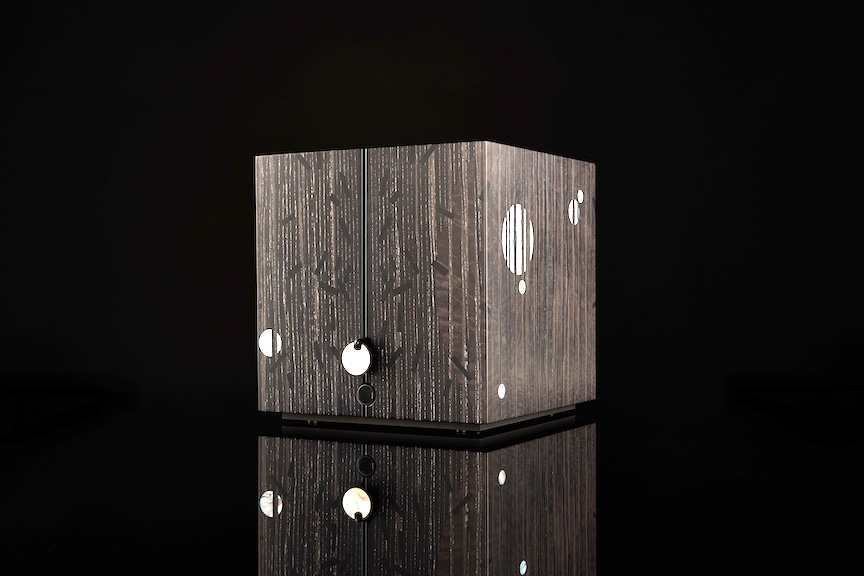
Mystery Box: Forget Time by Fiona Kruger and DeBethune. Just 20 pieces will be made.
Earlier this year during Watches & Wonders Geneva, I had the chance to meet one-on-one with independent watchmaker Fiona Krüger. Known for her out-of-the-box design concepts and her acclaimed Skull and Chaos watch collections, Krüger has a new marvel to showcase — one she worked hand-in-hand with horological virtuoso Denis Flageollet of De Bethune to create. Meet the Mystery Box: Forget Time — a mind-bending, visually poetic, and philosophically profound timepiece that redefines what a clock can be.
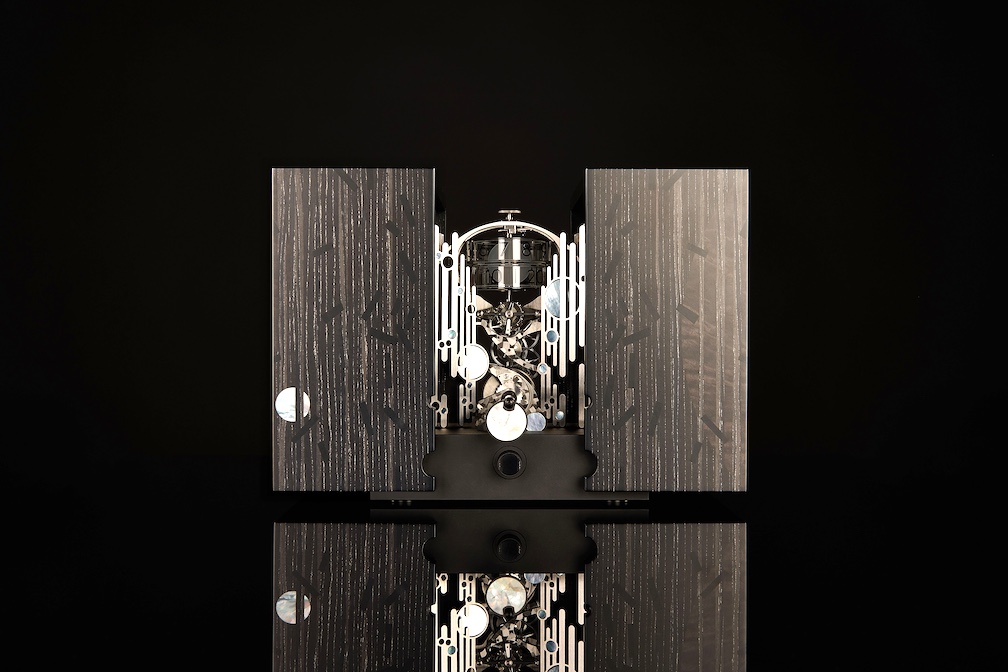
The Mastery Box urges us to Forget Time a little and focus on beauty and life.
It’s rare that a timekeeping object makes me question the very nature of time itself, but this one did. Not just through its mechanics, but through its narrative. In a world where watches often cling tightly to tradition or technological flexing, Mystery Box: Forget Time dares to go further — diving into the conceptual, the emotional, and the intangible. This is not a desk clock. It’s an experience.
A Clock That Questions Time Itself
The name says it all: Forget Time. Inspired by physicist Carlo Rovelli’s musings on the nature of time — its nonlinearity, its impermanence, and its deeply personal perception — this creation is more than a collaboration between artist and watchmaker. It’s a philosophical artifact.
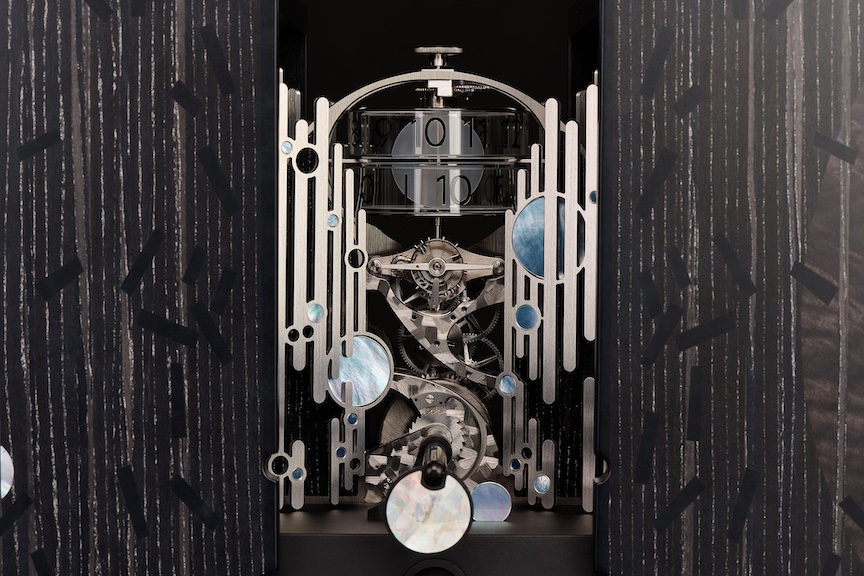
The movement of the Mystery Box: Forget Time is manually wound with a key.
Fiona Krüger, ever the conceptual visionary, began with a question rather than a design. How do you represent something as elusive and multifaceted as time? Drawing directly from Rovelli’s observation that “the past and future differ far less than we think, and even the notion of the present vanishes into the infinite universe,” Krüger didn’t try to measure time. She tried to express it. The result: an object that resists being labeled. Is it a clock? Yes. But it’s also a sculpture. A meditation. A story box.
Mechanics Wrapped in Mystery
The exterior, referred to as Part A, features intricate black-marquetry patterns set with mother-of-pearl inlays — a visual metaphor for photons drifting through space. These patterns appear almost to move as you view them, reinforcing the idea of time’s fluidity. It’s hypnotic and cosmic all at once, suggesting a universe in motion — or perhaps in contemplation.
A suspended key hovers in place, beckoning the viewer. It’s the first invitation to interact. A soft ticking sound is present, but muted — just enough to create curiosity. Press a hidden button and the clock’s secret is revealed: Part B.
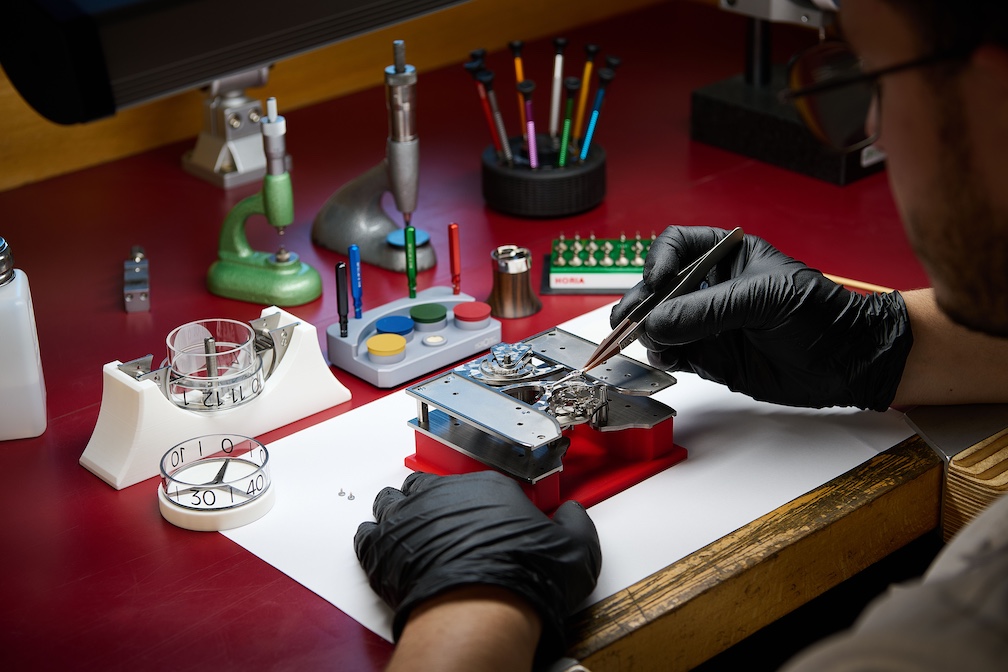
The Mystery Box: Forget Time by Fiona Kruger and DeBethune offers aconstant force regulator in its movement and is equipped with a mechanism for sliding the doors open.
Inside lies the true mechanism — a masterwork crafted by De Bethune and Denis Flageollet’s skilled team. Known for their mechanical innovations and striking aesthetics, De Bethune brings unparalleled expertise to this ethereal vision. Floating glass tubes display the hours and minutes, but not in the usual regimented way. The indices appear suspended, gently shifting — hinting at time’s elusive, subjective flow.
Mother-of-pearl discs expand outward from the center, creating movement where none should be. It’s a literal animation of Rovelli’s theory — space and time not as fixed entities but as constantly unfolding layers.
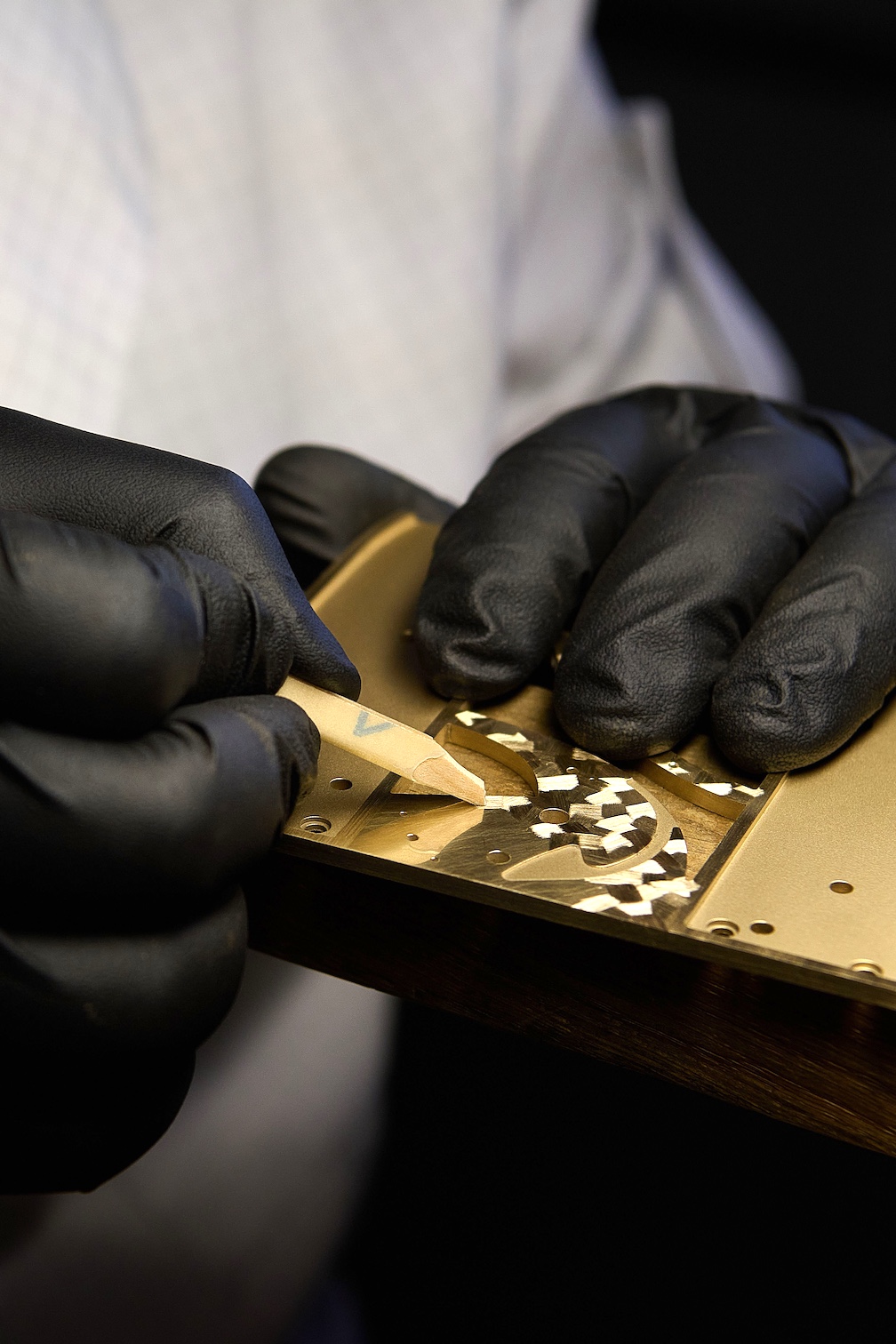
The clock consists of 35 mother-of-pearl inlays on the movement and incorporates wood marquetry.
Art, Horology, and Emotion Collide
The artistry doesn’t stop at mechanics. The external casing was brought to life in collaboration with Hawthorne Fine Boxes, whose artisan Emeline Dépail executed the delicate marquetry work with rare finesse. The box itself is almost like a cocoon — a shell that both protects and unveils the treasure within.
This piece is limited to just 20 editions, which feels appropriate. It’s not meant to be mass-produced or worn on a wrist. It’s meant to be pondered. Displayed. Heard and seen — and above all, felt.
For me, Mystery Box: Forget Time doesn’t just invite you to forget time — it compels you to confront how you perceive it. In a world of digital schedules, notifications, and alarms, this object reminds you that time is not a tyrant, but a tapestry. Something we exist within, not chase after.
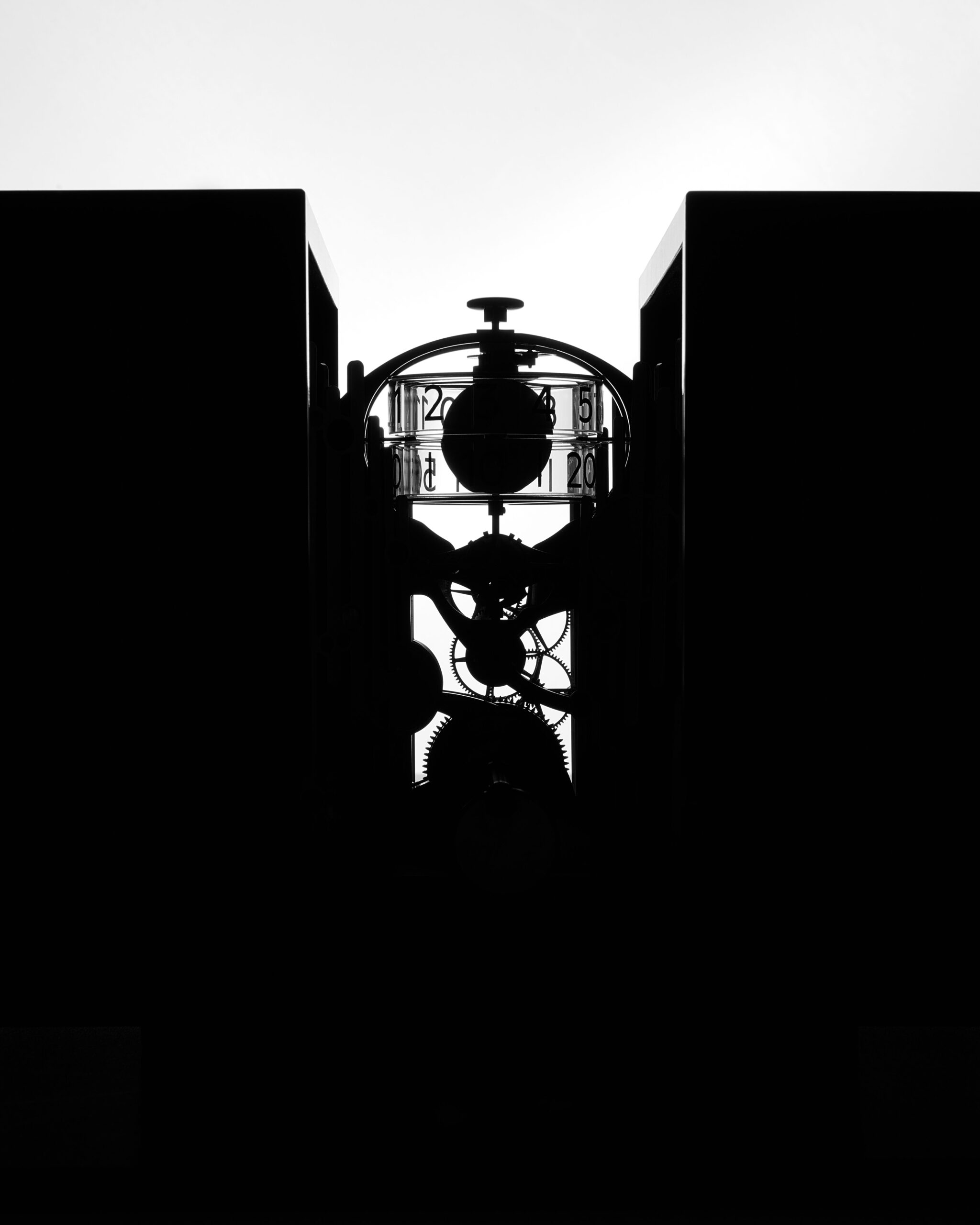
Mystery Box: Forget Time.
Standing in front of the Mystery Box in Geneva, I didn’t feel like I was being sold a timepiece. I felt like I was being let in on a secret. One that Krüger and Flageollet understand deeply — that time, in its purest form, is not just numbers ticking on a dial, but a mystery that links memory, anticipation, and presence. The Mystery Box seems to tell that story.





